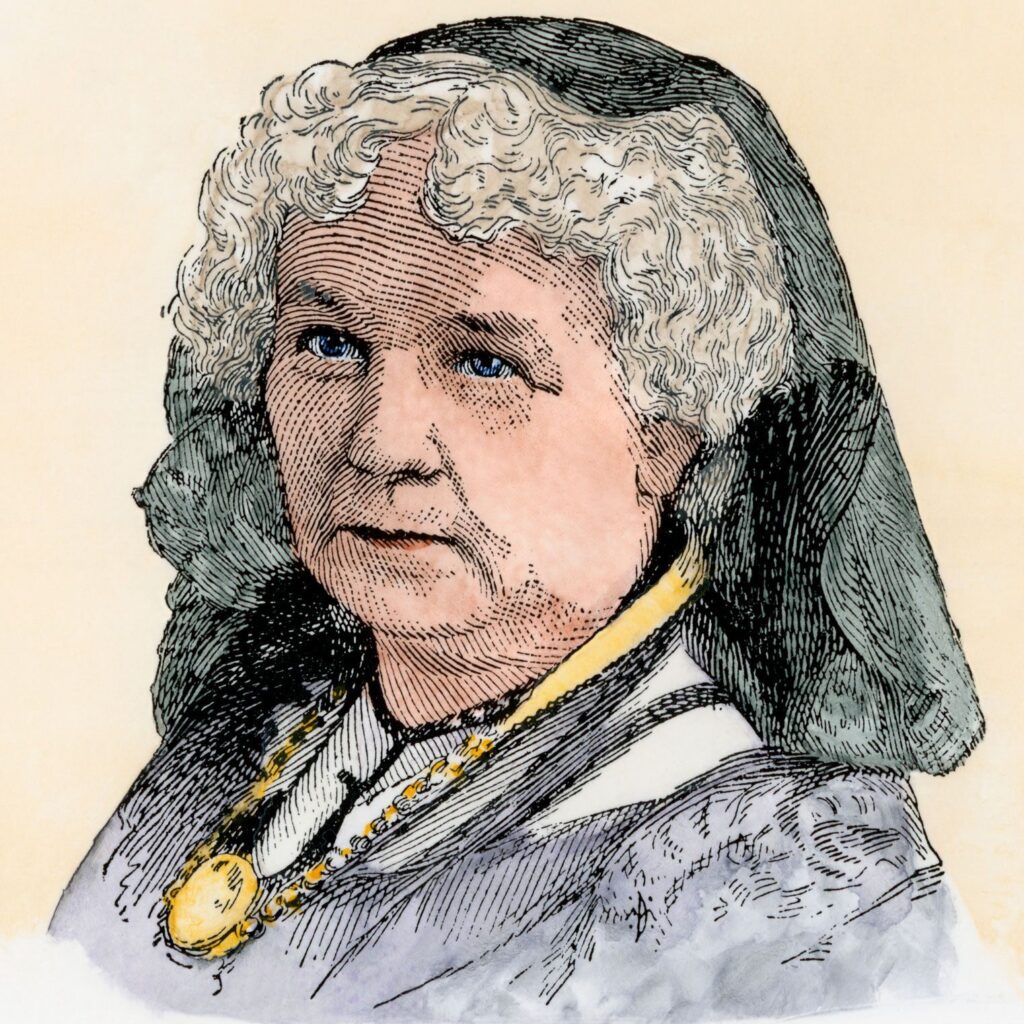
The Women’s Suffrage Movement: A Fight for Equality and Empowerment
The Women’s Suffrage Movement, spanning the 19th and early 20th centuries, was a pivotal chapter in the struggle for gender equality and civil rights. This movement sought to secure the legal right to vote for women, challenging deeply entrenched societal norms and advocating for women’s participation in the political process. The journey toward suffrage was marked by tireless activism, significant milestones, and profound social change. This comprehensive write-up explores the origins, key events, influential figures, and lasting impacts of the Women’s Suffrage Movement, highlighting its role in shaping modern democracy and women’s rights.
The Call for Equality
The fight for women’s suffrage emerged from a broader context of social reform and activism in the United States and beyond. In the mid-19th century, women began to organize and advocate for their rights, recognizing that the ability to vote was essential for achieving equality and influencing legislation that affected their lives. The suffrage movement was not merely about securing the right to vote; it was a struggle for recognition, empowerment, and the dismantling of patriarchal structures that marginalized women. As the movement progressed, it became a powerful force for change, uniting women across diverse backgrounds and experiences in the pursuit of a common goal.
Origins of the Women’s Suffrage Movement
Early Activism and Influences
The origins of the Women’s Suffrage Movement can be traced back to the early 19th century, when women began to voice their grievances and demand equal rights. The Seneca Falls Convention, held in 1848 in New York, is often regarded as the birthplace of the women’s rights movement. Organized by Elizabeth Cady Stanton and Lucretia Mott, this historic gathering produced the Declaration of Sentiments, which outlined the injustices faced by women and called for equal treatment under the law, including the right to vote.
The convention marked a turning point, inspiring women to organize for their rights and galvanizing support for the suffrage cause. Prominent abolitionists, such as Frederick Douglass, also participated in the convention, highlighting the interconnectedness of the struggles for women’s rights and racial equality.
The Split in the Movement
As the suffrage movement gained momentum, it faced internal divisions. In 1869, two factions emerged: the National Woman Suffrage Association (NWSA), led by Susan B. Anthony and Elizabeth Cady Stanton, and the American Woman Suffrage Association (AWSA), led by Lucy Stone. The NWSA focused on securing a constitutional amendment for women’s suffrage, while the AWSA pursued state-level campaigns to achieve voting rights. This split reflected differing strategies and priorities within the movement, but both organizations ultimately aimed for the same goal: women’s right to vote.
Key Events and Milestones
The 15th Amendment and Its Aftermath
The passage of the 15th Amendment in 1870, which granted African American men the right to vote, sparked frustration among suffragists. Many women, including Anthony and Stanton, were outraged that the amendment did not extend voting rights to women. This led to intensified advocacy for women’s suffrage and the formation of new organizations dedicated to the cause.
The Formation of the National American Woman Suffrage Association (NAWSA)
In 1890, the NWSA and AWSA united to form the National American Woman Suffrage Association (NAWSA), creating a more powerful and cohesive movement. Under the leadership of figures like Carrie Chapman Catt, NAWSA launched state-by-state campaigns to secure voting rights for women. They organized rallies, petitions, and lobbying efforts, building public support for suffrage.
The Suffrage Movement in the Early 20th Century
The early 20th century saw a resurgence of activism as women intensified their efforts to gain the right to vote. The National Women’s Party (NWP), founded by Alice Paul and Lucy Burns in 1916, adopted more militant tactics, including picketing the White House and organizing protests. The NWP’s approach aimed to draw national attention to the suffrage cause and pressure the government to act.
The Role of World War I
The outbreak of World War I in 1914 provided a unique context for the suffrage movement. As men went off to fight, women stepped into roles traditionally held by men, working in factories, serving as nurses, and contributing to the war effort. This shift in societal roles demonstrated women’s capabilities and furthered the argument for their inclusion in the political process. In 1917, President Woodrow Wilson changed his stance on women’s suffrage, recognizing the contributions of women during the war and advocating for the passage of the 19th Amendment.
The Passage of the 19th Amendment
After decades of activism, the 19th Amendment was finally passed by Congress in 1919 and ratified by the states in 1920. The amendment states, “The right of citizens of the United States to vote shall not be denied or abridged by the United States or by any State on account of sex.” This monumental victory marked a significant milestone in the struggle for women’s rights, granting women the legal right to vote in the United States.
Influential Figures in the Suffrage Movement
Susan B. Anthony
Susan B. Anthony was a leading figure in the women’s suffrage movement, known for her tireless advocacy and organizational skills. She played a crucial role in the formation of the NWSA and was instrumental in mobilizing support for women’s rights. Anthony’s commitment to suffrage and equality made her a symbol of the movement, and her legacy continues to inspire activists today.

Elizabeth Cady Stanton
As one of the architects of the women’s rights movement, Elizabeth Cady Stanton was a prominent suffragist and writer. Her work on the Declaration of Sentiments at the Seneca Falls Convention laid the groundwork for future activism. Stanton’s eloquence and advocacy for women’s rights, including suffrage, education, and property rights, positioned her as a key leader in the movement.

Alice Paul
Alice Paul was a suffragist and women’s rights activist who played a pivotal role in the later stages of the suffrage movement. Her formation of the NWP and adoption of militant tactics, such as picketing and hunger strikes, brought renewed energy to the cause. Paul’s strategic approach and determination were instrumental in securing the passage of the 19th Amendment.

Sojourner Truth
Sojourner Truth was an African American abolitionist and women’s rights activist known for her powerful speeches advocating for both racial and gender equality. Her famous “Ain’t I a Woman?” speech challenged prevailing notions of gender and race, emphasizing the intersectionality of the suffrage movement. Truth’s contributions highlighted the importance of inclusivity within the movement.

Social and Cultural Impacts
Changing Gender Roles
The Women’s Suffrage Movement had a profound impact on gender roles and societal expectations. As women fought for the right to vote, they also challenged traditional notions of femininity and domesticity. The movement empowered women to assert their rights and seek greater participation in public life, paving the way for future generations to continue the fight for equality.
Intersectionality and Inclusivity
While the suffrage movement achieved significant milestones, it also faced criticism for its lack of inclusivity. Many white suffragists often marginalized the voices of women of color, leading to divisions within the movement. The struggles faced by women of different races and ethnicities highlighted the need for an intersectional approach to feminism, recognizing that the fight for equality encompasses multiple dimensions of identity.
Legacy of the Suffrage Movement
The legacy of the Women’s Suffrage Movement extends far beyond the passage of the 19th Amendment. It laid the groundwork for subsequent civil rights movements and women’s rights activism in the 20th century and beyond. The principles of equality, empowerment, and social justice that emerged from the suffrage movement continue to resonate today, inspiring ongoing efforts to address gender disparities and advocate for women’s rights globally.
Conclusion: A Continuing Journey
The Women’s Suffrage Movement was a monumental struggle that transformed the political landscape and advanced the cause of gender equality. Through the tireless efforts of countless activists, women secured the right to vote, challenging societal norms and asserting their place in the democratic process. While the passage of the 19th Amendment marked a significant victory, the fight for true equality and representation continues. As we reflect on the achievements of the suffragists, we are reminded of the importance of ongoing advocacy for women’s rights and the need to ensure that all voices are heard in the pursuit of justice and equality.
FAQs
What was the Women’s Suffrage Movement?
The Women’s Suffrage Movement was a social and political campaign aimed at securing the legal right to vote for women, primarily in the 19th and early 20th centuries.
When was the 19th Amendment passed?
The 19th Amendment was passed by Congress on June 4, 1919, and ratified by the states on August 18, 1920, granting women the right to vote in the United States.
Who were some key figures in the suffrage movement?
Key figures included Susan B. Anthony, Elizabeth Cady Stanton, Alice Paul, Sojourner Truth, and Lucy Stone, among others, who played significant roles in advocating for women’s rights.
What were some challenges faced by the suffrage movement?
The suffrage movement faced numerous challenges, including societal resistance, internal divisions, and the marginalization of women of color. Many suffragists also struggled to gain support from lawmakers and the public.
How did the suffrage movement impact gender roles?
The suffrage movement challenged traditional gender roles and empowered women to assert their rights, leading to changes in societal expectations and increased participation in public life.
What is the legacy of the Women’s Suffrage Movement today?
The legacy of the Women’s Suffrage Movement continues to influence contemporary discussions about gender equality, civil rights, and social justice, inspiring ongoing advocacy for women’s rights globally.
Read Related Posts
- The Discovery of DNA
- The Cold War (1947-1991)
- The Black Plague (1347-1348)
- The Salem Witch Trials (1692-1693)
- Discovery of America: A Journey Beyond Columbus

